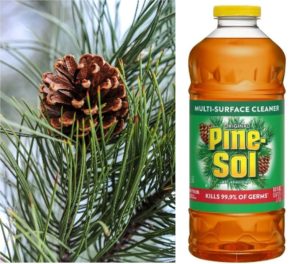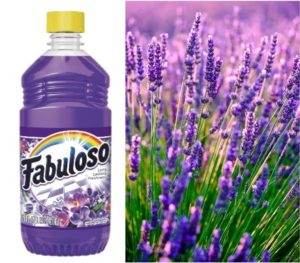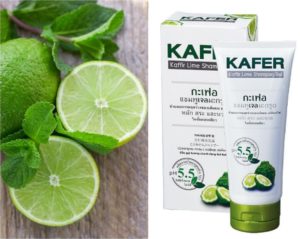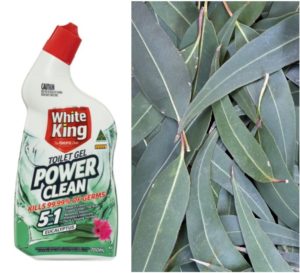The first installment of articles all about “The Sense of Clean.”
by Heather Lane
Toss out everything you think you know about clean scents. The scent of clean is much more than the overwhelming, pungent odor of bleach or the burning, alcohol-based hand sanitizers that would shame bottom-shelf vodka.
Long before the pandemic, the ‘scent of clean’ evolved as a complex combination of notes that pull from years of cultural traditions and scented household cleaning products.
What smells clean to you may not agree with the noses of those living in different cultures. In fact, research proves it.
The U.S. Has Been on Cloud Pine Since 1929
 For most Americans, the smell of pine immediately transports them to the feeling of a freshly cleaned space. But have you ever stopped to wonder why something as sticky and messy as pine sap is linked with cleanliness? Most of the world find it a paradoxical association.
For most Americans, the smell of pine immediately transports them to the feeling of a freshly cleaned space. But have you ever stopped to wonder why something as sticky and messy as pine sap is linked with cleanliness? Most of the world find it a paradoxical association.
Not to get sappy, but the relationship between Americans and the scent of pine go way back; try the launch of Pine Sol in 1929. For nearly 100 years, this cleaning product has been used to mop floors, scrub houses, and to keep spaces smelling clean. Harry A. Cole, the American chemist responsible for the pine scented cleaner, lived only miles from a pine forest, which sparked his inspiration for the scent.
His decision has had a lasting impact on the American cultural definition of the scent of clean. More than 90 years after he created Pine Sol, the scent of pine is still the number one ranked scent for Americans when it comes to “disinfecting, germ-killing, & deep cleaning/de-greasing,” according to a 2020 survey by the world’s largest private fragrance and flavor house, Firmenich.
Latin America’s Once and in a Floral Type of Relationship
 Many people around the world associate the earthy, floral scent of lavender with relaxation or a trip to the spa; but in Latin America, one whiff of lavender gives people the refreshing feeling of clean. How did this little purple flower, not native to the continent, come to be the scent of cleanliness?
Many people around the world associate the earthy, floral scent of lavender with relaxation or a trip to the spa; but in Latin America, one whiff of lavender gives people the refreshing feeling of clean. How did this little purple flower, not native to the continent, come to be the scent of cleanliness?
It’s due in no small part to popular cleaning product, Fabuloso. In 1983, this popular household cleaner launched in Venezuela. It has been used for 40 years throughout South America, forging a strong cultural tie between lavender and cleanliness that transcends borders for Latin Americans. A survey by the Miami Herald rated lavender scent as the number one scent of clean for Latin American households.
Asia’s Scents of Clean Stay in the Limelight
Firmenich took their ‘scents of clean’ study around the world and got some juicy details about popular, clean scents in Asia. In 2020, the fragrance house surveyed people from southeast Asian countries, asking which fragrant ingredients they believe eliminate bacteria. Indonesia, Thailand, and Vietnam all gravitated toward citrus: lime, lemongrass, and lemon.
 Experts from leading ambient scenting company, Prolitec, sat down to elaborate more on this research. Prolitec’s Asia and Middle East Account Director, Sam John, has worked with businesses throughout South East Asia to find scents the indicate cleanliness. When asked about his experience with the regional scents of clean, he echoed Firmenich’s study results: “lime and citrus based scents were embedded into the Asian culture as the ‘sense of clean.’ When people smell it, they internally feel healthy, hygienic and clean.”
Experts from leading ambient scenting company, Prolitec, sat down to elaborate more on this research. Prolitec’s Asia and Middle East Account Director, Sam John, has worked with businesses throughout South East Asia to find scents the indicate cleanliness. When asked about his experience with the regional scents of clean, he echoed Firmenich’s study results: “lime and citrus based scents were embedded into the Asian culture as the ‘sense of clean.’ When people smell it, they internally feel healthy, hygienic and clean.”
Sam, who is based in Singapore, added that the clean scent of lime isn’t limited to cleaning surfaces. In many Asian cultures, lime was used in hand-washing bowls before consuming food and most classic aftershaves were infused with lime.
Reinforcing Clean with Some Australian Roots
Australia has the scent of something close to home when it comes to clean smells – Eucalyptus & Tea Tree. There are hundreds of species of Eucalyptus, most of which can be found in the Land Down Under. The oil gathered from the leaves of these towering trees produces a minty, fresh scent that is commonly used in aroma therapy and in cleaning products.
Tea Tree has an abundance of species, most also native Australia. The leaves have glands that produce the camphoric scented ‘tea tree oil.’ Together, the two plants combine into a healthy, minty scent of clean.
 Marijn Kortekaas, who lives in Melbourne, Australia has been in the ambient scenting industry since 2007. He now serves as the Director Business Development, North East Asia & Oceania for Prolitec and sat down to discuss what he thought about the ‘scents of clean’ in the Australia.
Marijn Kortekaas, who lives in Melbourne, Australia has been in the ambient scenting industry since 2007. He now serves as the Director Business Development, North East Asia & Oceania for Prolitec and sat down to discuss what he thought about the ‘scents of clean’ in the Australia.
According to Marijn, the use of tea tree and eucalyptus is rooted deep in regional history: “the Bundjalung Aboriginal people of eastern Australia use the leaves to prepare a healing tea and used it as a cleansing agent for wounds.” The natural cleansing qualities of the plants have continued to make them popular in the region. “In Australia, consumers often reach for native eucalyptus and tea tree oils to naturally clean their homes,” Kortekaas said.
Cultural associations and familiar household cleaning products are an important variable that influence the scents we associate with cleanliness. To find out how more about how Prolitec has incorporated this research into their fragrance lines, visit their new Hygiene+ page.
—————————-
Cited Sources:
Miami, and Amy Reyes. What Does Your Favorite Fabuloso Scent Say about You? Miami.com Investigates. www.miamiherald.com/miami-com/funny-stories/article225772580.html
Alison Downing, Brian Atwell, Kevin Downing Department of Biological Sciences Faculty of Science and Engineering. Leptospermum Tea Tree. Macquarie University. Retrieved August 30, 2020 from https://www.mq.edu.au/__data/assets/pdf_file/0020/367031/Plant-of-the-week-Leptospermum-Tea-Tree.pdf
Australian Academy of Science. (2018, March 23). The story of our eucalypts. Retrieved September 01, 2020, from https://www.science.org.au/curious/earth-environment/story-our-eucalypts
————————-
About the Author
Heather enjoys delving into research exploring the ways fragrance impacts people in their daily lives. She is a VP at Prolitec, a global provider of ambient scenting, and a recent graduate of the MBA program at Tulane University in New Orleans.
When not studying the fascinating ways fragrance intersects the world of business, Heather renovates historic houses and gets her hands dirty with her non-profit ceramics arts studio.

